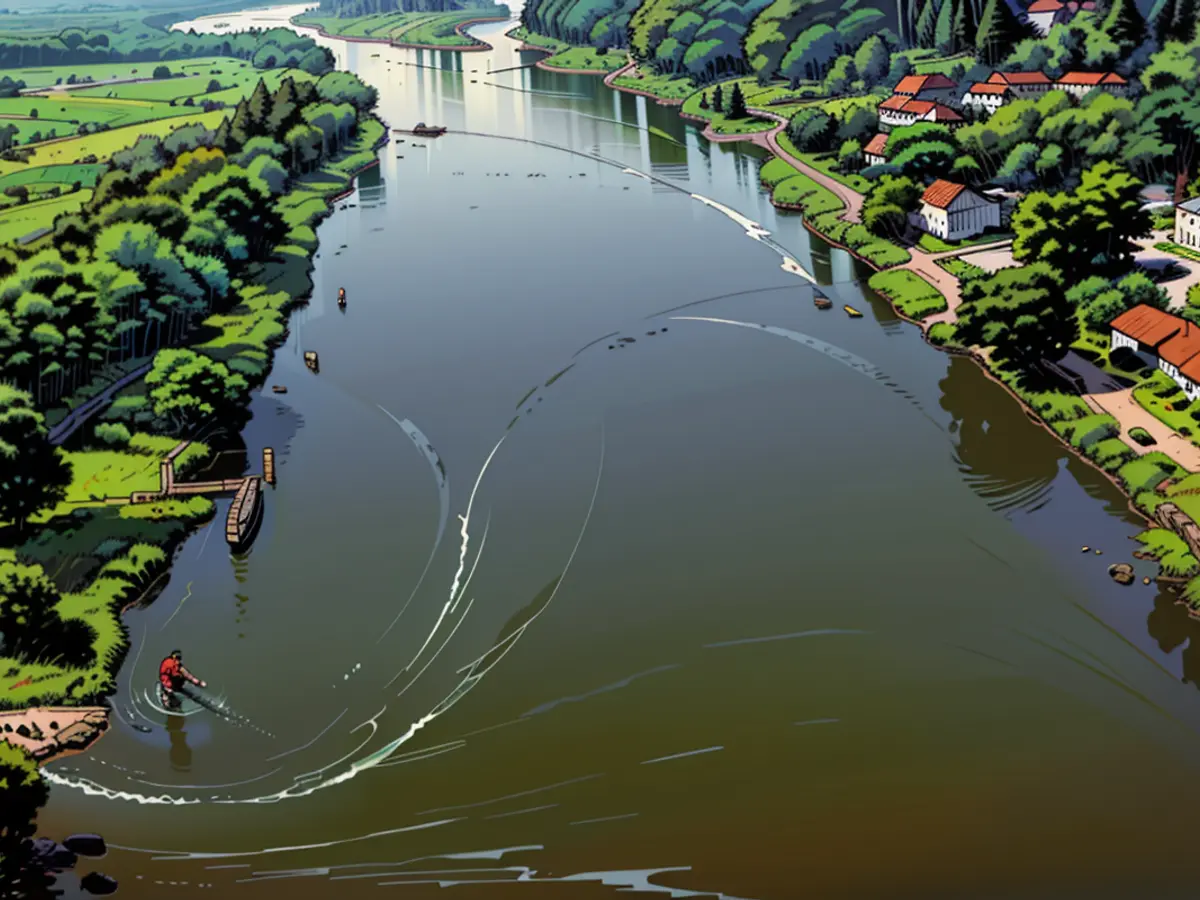Heavier algae growth in the Oder River prompts concern for another fish die-off.
The Environment Ministry reports that only a limited number of dead fish have been discovered so far. However, the water has unusually high levels of electrical conductivity and chlorophyll content, as well as toxicity. The river's ecosystem is still in recovery mode after the 2022 Oder disaster that killed hundreds of tons of organisms, including fish, and it's lacking in algae-consuming creatures like snails and mussels which would normally help clean up the river.
Currently, the Ministry is at risk level three on the warning system, a stage they implemented together with Polish authorities after the deadly 2022 Oder catastrophe.
Read also:
The Golden alga, known for causing harmful algae blooms, has been detected in the Oder River, adding to the concerns. Once again, the BMU and Polish authorities are at risk level three, urging caution. The high environmental toxicity and chlorophyll content in the water could be linked to the Golden alga growth, potentially leading to more fish mortality. Germany's Federal Environment Ministry is calling for increased care to monitor the situation and prevent another Oder River disaster. Despite the Potsdam-based BMU's efforts, the lack of algae-consuming organisms like snails and mussels continues to pose challenges in controlling the algae growth.







